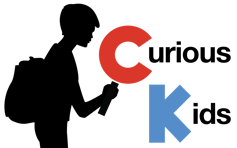This is an article from Curious Kids, a series for children. The Conversation is asking kids to send in questions they’d like an expert to answer. All questions are welcome – serious, weird or wacky!
Where do flies sleep? You never see them still like they could be asleep. - Ruby, age 8, Giralang, ACT.
Great question, Ruby!
Flies are just like us – they spend the entire day buzzing around with their friends and get pretty tired at bedtime. Before sunset, a sleepy fly will try and find a safe place to rest. Some favourite places are on the undersides of leaves, twigs, and branches, or even in tall grass or under rocks. They need a comfortable place to sleep that will shelter them from the cold, rain and wind.
Flies need good grip because they often sleep upside down. If they sleep on the ground, they could get eaten by a hungry bird, marsupial, or frog.
Like us, flies will often nap in the shade of a tree to escape the afternoon heat. If they stayed out in the sun too long, they’d get very thirsty, overheat and would, well, drop like flies.
Read more: Curious Kids: Do sharks sneeze?
Of course there are also party animals, like mosquitoes, that stay up all night looking for the perfect dinner. Mosquitoes are a type of fly, and have adapted their super-sensitive eyes and antennae to see in the dark. Unfortunately for us, this means that they can use their night vision to easily find and bite us. Did you know that it’s only female mosquitoes that bite us? They need the protein in our blood to ripen their eggs. All the males are peaceful vegetarians that prefer a sugary drink like flower nectar.

Flies need beauty sleep too
We have fine-tuned body clocks, or circadian rhythms, that help us fall asleep and wake up at about the same time each day. When the sun sets, your eye makes two sleepy proteins called tim and per. These tell your brain to go to sleep. When the sun comes up, sunlight enters your eye and breaks these proteins, letting you wake up and start your day.
Flies and other daytime animals also have these sleepy proteins in their eyes. For nocturnal animals, like most mosquitoes, the cycle is reversed.
Read more: Curious Kids: Do animals sleep like people? Do snails sleep in their shells?
Have you ever wondered why adults say you shouldn’t stare at your screen at night? This is because the blue light from a phone, tablet or computer screen can stop these sleepy proteins from telling your brain to get tired. This also happens to flies when they are trapped in our kitchen and kept awake by the fluorescent light.
Fun fly facts
You’ve probably noticed a lot more flies buzzing around in summer than winter. This is because flies and other insects are cold-blooded, meaning they can’t keep warm themselves and their body temperature is affected by the outside temperature.
In the summer when it’s hot, flies are super active and buzz around all day. In winter, adult flies are too cold to move and die off. At the same time, the larvae stay in the cocoon, or pupal phase, waiting to turn into adults when spring starts. When the season changes, the flowers begin to bloom and the newly hatched adult flies have nectar to drink. While they drink, they also get covered in pollen and help pollinate the plant.
Did you know that without flies, there would be no chocolate? This is because the only known pollinator of the cocoa plant that gives us chocolate is a tiny fly, about the size of a pin head.
So the next time you’re in the garden on a hot day, check the undersides of leaves and try to spot a sleepy fly!
Hello, curious kids! Have you got a question you’d like an expert to answer? Ask an adult to send your question to us. They can:
* Email your question to curiouskids@theconversation.edu.au
* Tell us on Twitter by tagging @ConversationEDU with the hashtag #curiouskids, or
* Tell us on Facebook

Please tell us your name, age, and which city you live in. You can send an audio recording of your question too, if you want. Send as many questions as you like! We won’t be able to answer every question but we will do our best.

